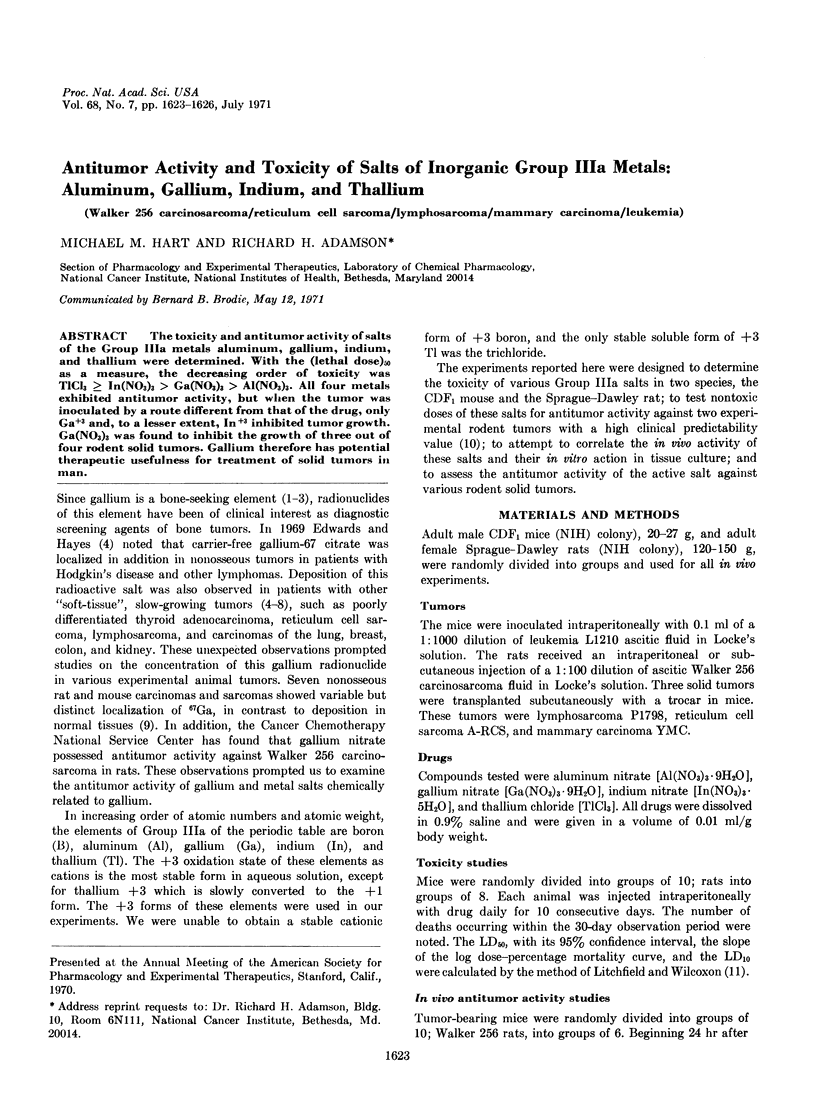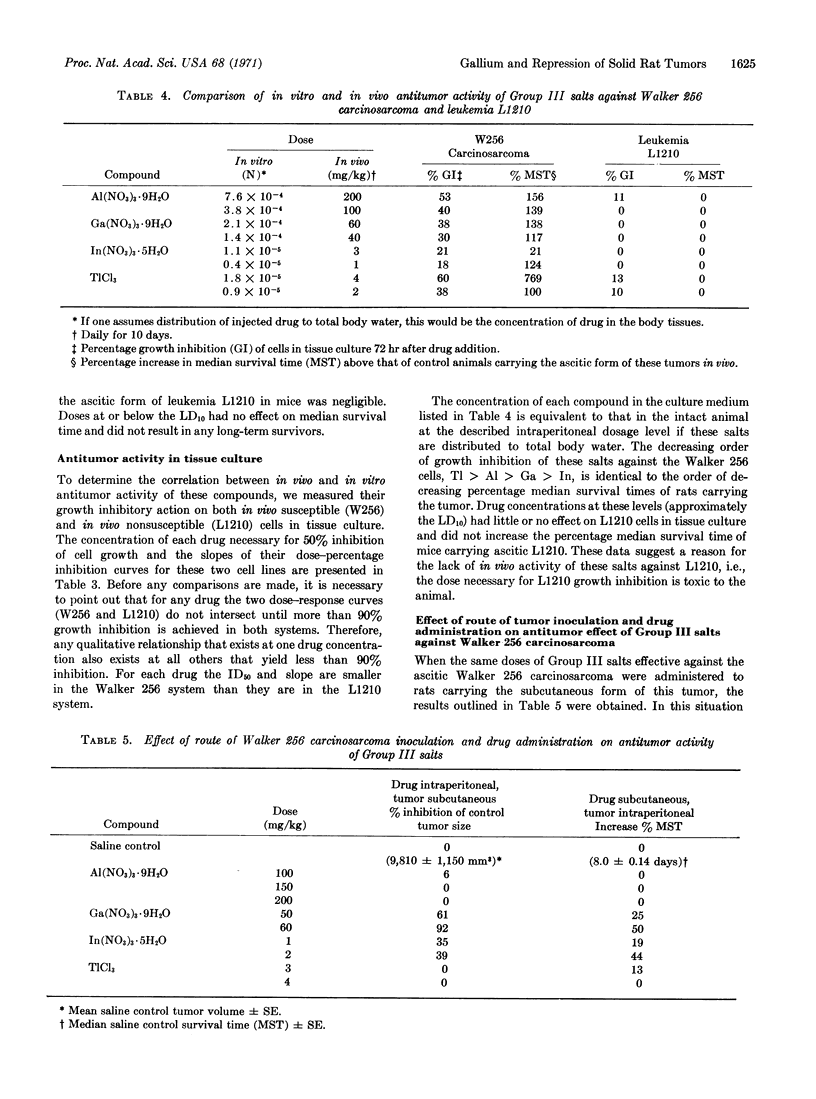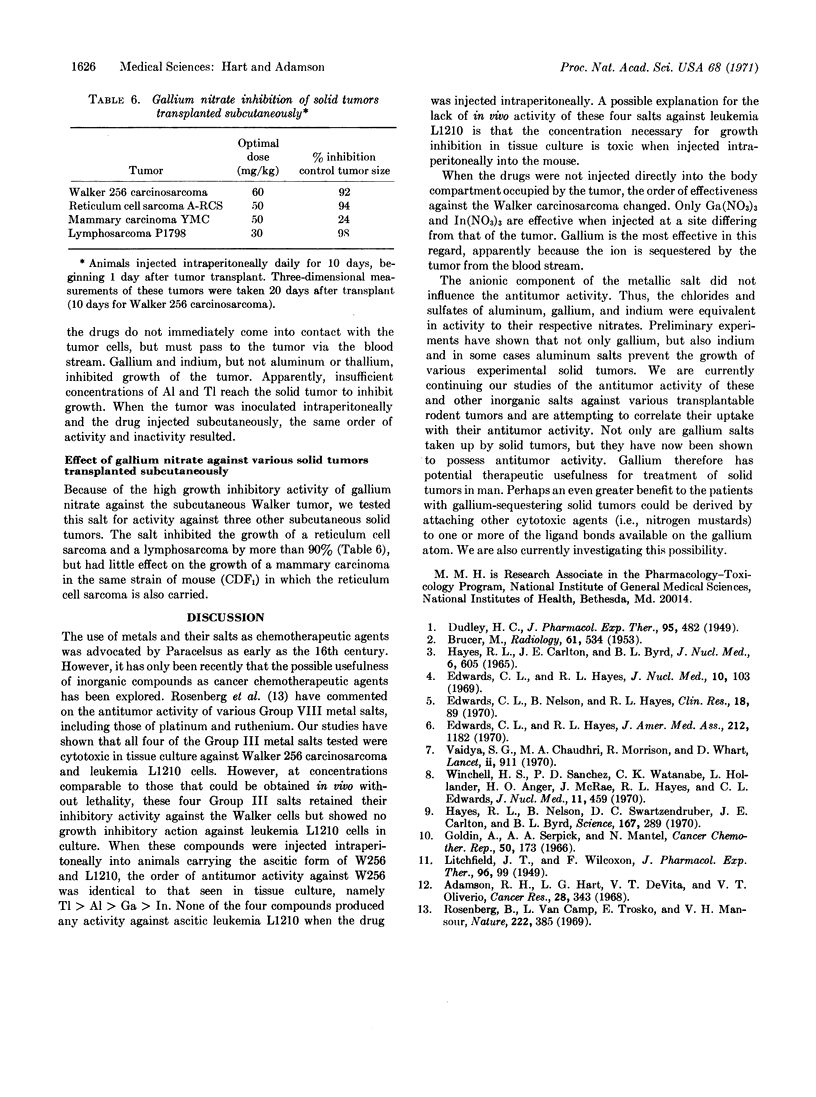Abstract
The toxicity and antitumor activity of salts of the Group IIIa metals aluminum, gallium, indium, and thallium were determined. With the (lethal dose)50 as a measure, the decreasing order of toxicity was TlCl3 ≥ In(NO3)3 > Ga(NO3)3 > Al(NO3)3. All four metals exhibited antitumor activity, but when the tumor was inoculated by a route different from that of the drug, only Ga+3 and, to a lesser extent, In+3 inhibited tumor growth. Ga(NO3)3 was found to inhibit the growth of three out of four rodent solid tumors. Gallium therefore has potential therapeutic usefulness for treatment of solid tumors in man.
Keywords: Walker 256 carcinosarcoma, reticulum cell sarcoma, lymphosarcoma, mammary carcinoma, leukemia
Full text
PDF



Selected References
These references are in PubMed. This may not be the complete list of references from this article.
- Adamson R. H., Hart L. G., DeVita V. T., Oliverio V. T. Antitumor activity and some pharmacologic properties of anthramycin methyl ether. Cancer Res. 1968 Feb;28(2):343–347. [PubMed] [Google Scholar]
- BRUCER M., ANDREWS G. A., BRUNER H. D. A study of gallium. Radiology. 1953 Oct;61(4):534–613. doi: 10.1148/61.4.534. [DOI] [PubMed] [Google Scholar]
- Edwards C. L., Hayes R. L. Scanning malignant neoplasms with gallium 67. JAMA. 1970 May 18;212(7):1182–1191. [PubMed] [Google Scholar]
- Edwards C. L., Hayes R. L. Tumor scanning with 67Ga citrate. J Nucl Med. 1969 Feb;10(2):103–105. [PubMed] [Google Scholar]
- Goldin A., Serpick A. A., Mantel N. Experimental screening procedures and clinical predictability value. Cancer Chemother Rep. 1966 May;50(4):173–218. [PubMed] [Google Scholar]
- Hayes R. L., Carlton J. E., Byrd B. L. Bone scanning with gallium-68: a carrier effect. J Nucl Med. 1965 Aug;6(8):605–610. [PubMed] [Google Scholar]
- Hayes R. L., Nelson B., Swartzendruber D. C., Carlton J. E., Byrd B. L. Gallium-67 localization in rat and mouse tumors. Science. 1970 Jan 16;167(3916):289–290. doi: 10.1126/science.167.3916.289. [DOI] [PubMed] [Google Scholar]
- Rosenberg B., VanCamp L., Trosko J. E., Mansour V. H. Platinum compounds: a new class of potent antitumour agents. Nature. 1969 Apr 26;222(5191):385–386. doi: 10.1038/222385a0. [DOI] [PubMed] [Google Scholar]
- Vaidya S. G., Chaudhri M. A., Morrison R., Whait D. Localisation of gallium-67 in malignant neoplasms. Lancet. 1970 Oct 31;2(7679):911–914. doi: 10.1016/s0140-6736(70)92074-x. [DOI] [PubMed] [Google Scholar]
- Winchell H. S., Sanchez P. D., Watanabe C. K., Hollander L., Anger H. O., McRae J. Visualization of tumors in humans using 67Ga-citrate and the Anger whole-body scanner, scintillation camera and tomographic scanner. J Nucl Med. 1970 Jul;11(7):459–466. [PubMed] [Google Scholar]


